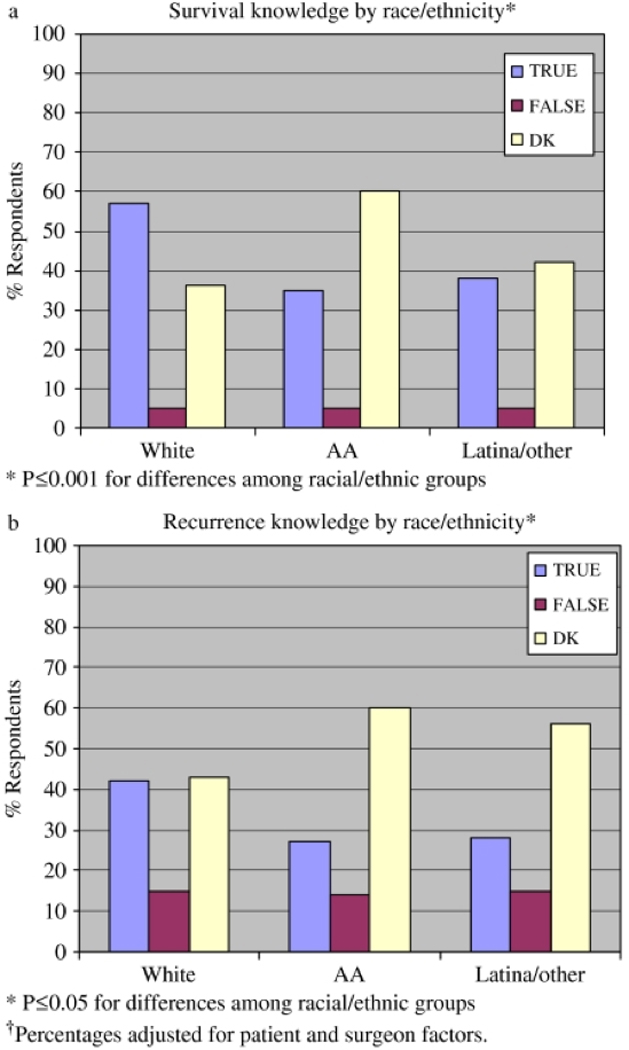Figure 1.

The figures show the estimated rate of mastectomy and breast reconstruction for a typical patient in the dataset across the different individual surgeons. The base case represents a 50–64 year old, white high school graduate with moderately differentiated early stage disease, with no clinical contraindication to BCS. Two other cases are shown in each graph. For mastectomy, a patient with a larger and higher stage is shown, as well as one with a contraindication to BCS. For reconstruction, a patient with larger and higher stage is also shown along with a patient with age>65. At the bottom of the graph are histograms showing the distribution of the surgeon effects observed for the study participants. These distributions illustrate the degree to which the observed surgeon effects are normally distributed, as well as the presence or absence of any outlier surgeons, and give a sense of the proportion of the population of surgeons that would be expected to have any given rate mastectomy or reconstruction. The magnitude of difference in rates across the distribution of surgeons can be compared to the magnitude of effect across the different levels of covariates illustrated with the different lines.
